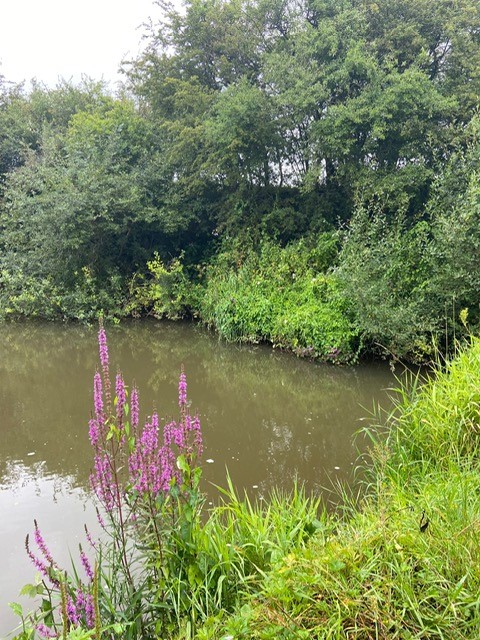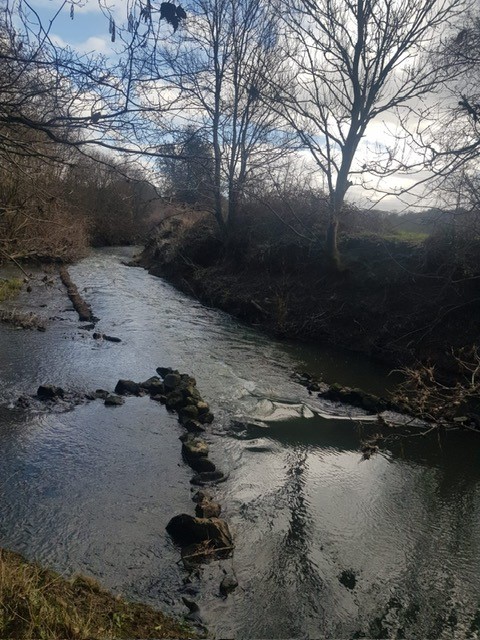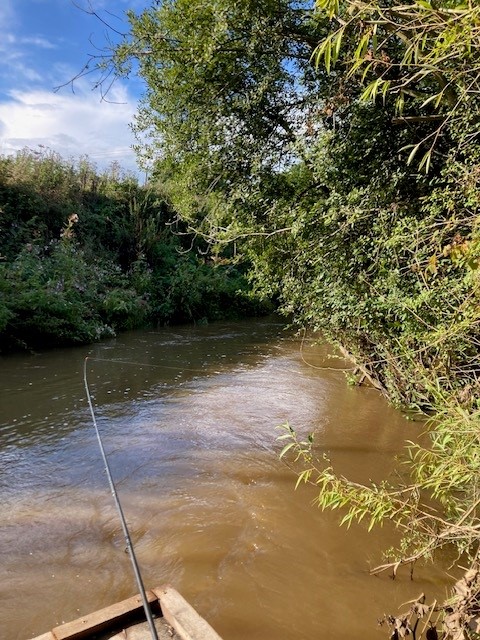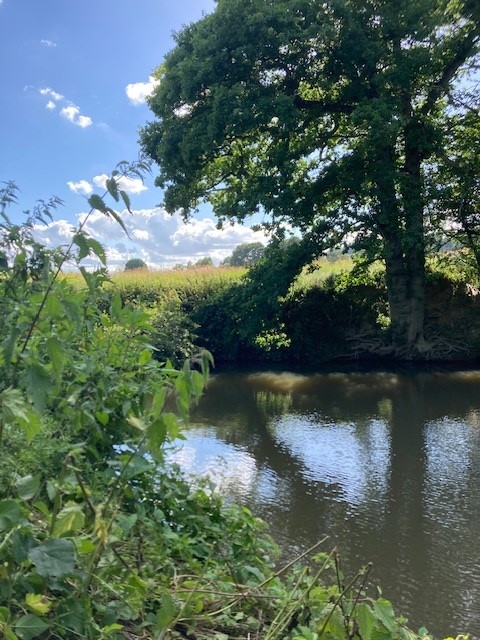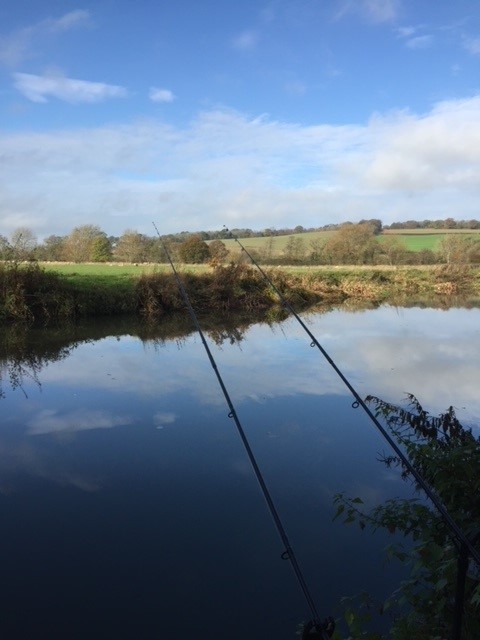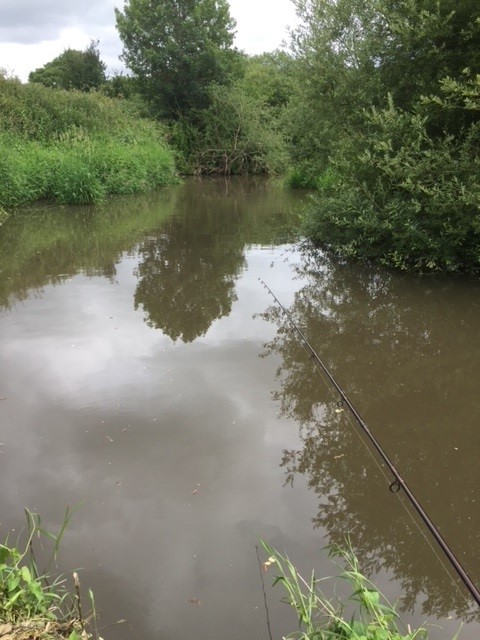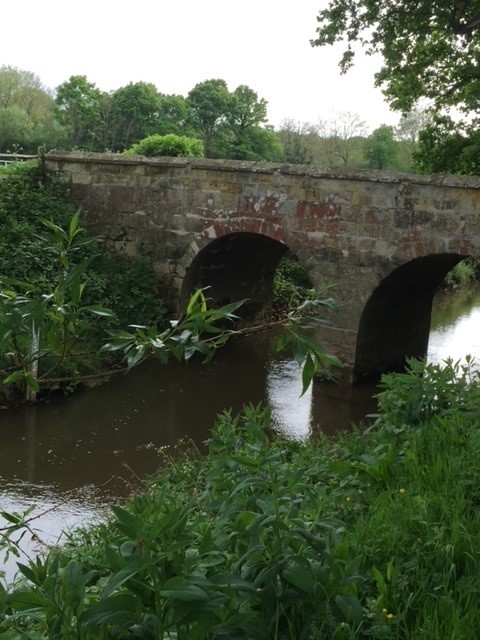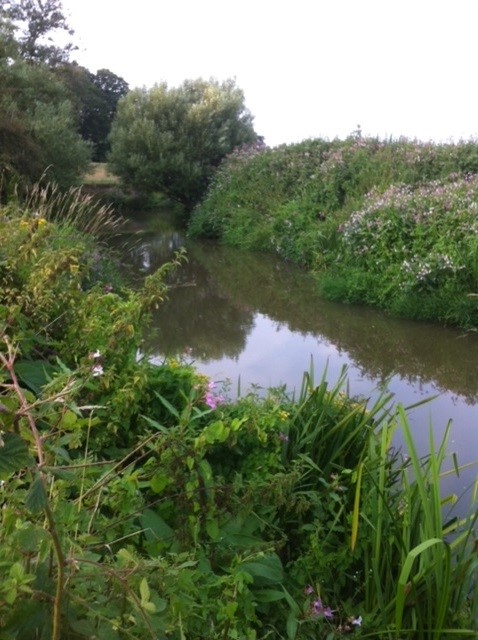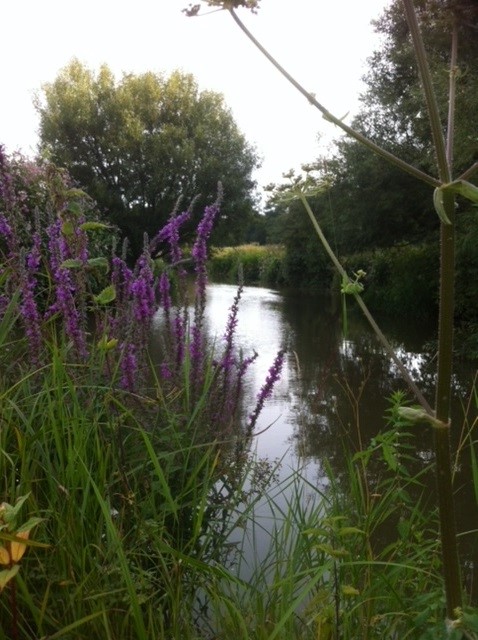-
Small river and lake fishing in the beautiful countryside of Kent and East Sussex
CONTACT MEMBERS AREA APPLY -
RTWAS is a friendly club with over 7 miles of river and a variety of still waters
CONTACT MEMBERS AREA APPLY -
Enjoy splendid scenery and abundant wildlife in the pursuit of a wide range of species
CONTACT MEMBERS AREA APPLY -
Join now and you can relax and enjoy the best of the Garden of England today
CONTACT MEMBERS AREA APPLY
Our Waters
Ashurst
Two different fisheries on one river is the best way to describe this part of the Medway because as it meanders from Ham Farm back to civilisation at Ashurst railway station
The upper section slows as it reaches the weir and is a haven for Carp, Chub, Roach and Dace. The Carp can be very large here, a 26lb fish reported at the start of last season so it’s advisable to use sturdy tackle because you just don’t know what might pick up your bait. Early in the season the plant growth in this area is phenomenal so a sickle or some such implement will help clear the way to the river. As this implies the insects thrive here, including lots of butterflies, damsels etc and the bird population reflects this so take your spotter book you may see a species worth noting. Avocets, Lapwings Egrets and Sparrowhawk are all seen from time to time along with many other field birds. The river then drops into the weir pool and the fishing changes. Barbel and Chub are the dominant species from now on.
Last season RTWAS embarked on a habitat improvements program with the Environment Agency because in the previous season reports of smaller Barbel captures from Fordcombe and Ashurst fell while reports of larger specimens increased. This suggested that year groups were missing. We were interested in what might be done to combat the problem and with a number of possible culprits (Crayfish, Mink, Cormorant, erosion of the banks by Himalayan Balsam etc) the EA agreed to a three year stocking program on the Upper Medway involving 500 Barbel and 500 Chub anually. The first of these fish have been in the river since December 2016, 200 of each stocked at Ham farm. 150 Barbel and 200 Chub were also stocked below the weir with a view to giving the thriving population we already have in this part of the river a boost so members should report any catches of immature Barbel with blue spots on the underside, weighing and measuring and photographing them and sharing the information on our Forum or closed Facebook page. The remainder were stocked at Fordcombe. As for the existing fish, well they seem to get bigger and bigger. Evidence suggests a group of these are now pushing the 14 lb mark, several 13’s being caught last season so there is much to look forward to. While many fish are caught in and around the weir it would be a mistake to think the rest of the stretch should be ignored as Barbel and quality Chub are caught all the way down the stretch to Chafford Bridge. The lower section also has the advantage of being much quieter.
Be warned, these fish are strong and the river is very snaggy so sturdy tackle is required and as our rules state, barbless hooks are advised.
The Kingfishers also love this part of the river and sometimes get quite close so the camera is a must.
Buxted Park
Is our newest venue and, as we speak, our only still water. It comprises of 3 lakes and a stretch of the River Uck and is within the grounds of the famous stately home
The Lily Lake is the first you come to from our point of access and as its adopted name suggests is largely covered by lilies. Species include Carp to mid teens, quality bream to 5lb and Perch to 2lb, plus a myriad of smaller fish including Roach and Rudd.
The Hotel Lake is overlooked by the Hotel and contains many small Carp up to double figures, plus the normal associate species. If you get onto the fish here you can be very busy. However fishing is restricted to the bank facing the Hotel only.
The Long Lake is the largest area of water and has, so far, produced the best fish. Common Carp to 15lb and mirrors, slightly smaller have been caught and this lake has produced some large catches of Bream, up to 5lb 8oz.
The feature of the fish in these lakes is their superb condition and colouring (see photos).
This venue is a local beauty spot and is a joy to be at. The water bird population is noisy, but friendly and the twitchers will be delighted to watch Kingfisher, Wagtails Reed Buntings, Woodpeckers, Blackcaps, Warblers, Kestrel, Egrets and Cuckoos, all of which are resident during the summer months. If you gaze into the heavens from time to time you will see Buzzards and maybe, if you’re lucky a Red Kite.
Such a place has many fans and that includes loads of dog walkers and these can be a distraction from time to time so be warned.
Fordcombe
Our most famous location and is known as a former Barbel British record venue. This section still does produce very large fish although it’s probably safe to say, not in the numbers that exist upstream at Ashurst
This is also a more demanding stretch in that the banks can be very difficult, if not downright dangerous in the winter. Advice here is to purchase a rope and dog spike especially if you intend to fish areas where steps have not yet been made available. That said, part of our habitat improvements have focussed on the banks that have been damaged by constant clambering up and down and the planting of native plants in an effort to repair the damage and encourage species of insects etc and this is why we have worked hard over the last 2 years installing steps into most of the known swims. The thought process being that only a small section of the bank will be damaged by this work rather than huge slides created down to the river in the popular areas. Please use the steps where provided and report any damage so that we can effect repairs quickly.
On parts of the river you may see evidence of habitat improvement work such as coya rolls filled with plants. These are sited below the road bridge and driven into the river bed. Please do not investigate these structures as they are there to eventually provide shelter for young fish which we hope will hide underneath and around them.
Back to the fishing and the upper section is often neglected Barbel are caught right up to Chafford weir although most of the area is very shallow. The deep pools are obviously good areas to try but they can be pressured in summer so it’s a good idea to try the faster swims you may get a surprise.
Lower down below the Colliers Land Road bridge the river has some brilliant features including deep holes and fast flowing shallows. Lots of cover in the form of trees and fallen timber make this a challenge to any angler but one well worth taking on as the Chub and Barbel are fighting fit and the surroundings tranquil. The Buzzards are often seen here along with loads of noisy Rooks but as the sun sets lower Fordcombe, resonates to the sounds of Owls and other birds of prey calling.
As for what to expect fish wise after a period where no monsters have been reported there is evidence that a head of large Barbel are now back at Fordcombe. Reports of a 13lb fish last season suggests that the 15lb mark will soon be reached again and there is no reason to doubt the at this part of the river can produce fish of this size because it has happened before. And its not just barbel and chub (caught each year to 6lb, didn’t I mention that?) as one of our Committee Members caught 2, 2lb roach in a session.
Be warned, these fish are strong and the river is very snaggy so sturdy tackle is required and as our rules state, barbless hooks are advised.
Hartfield to Ham Farm
This stretch of the Upper Medway is a jewel we don’t like to shout about too much just in case too many find out about it. Our waters are replenished by the streams of the neighbouring Ashdown Forest
A Special Site of Scientific Interest and home to some of our rarest wildlife including Birds, Dragon Flies, Damsel Flies, Butterflies and Moths.
Far too many to mention all but the species you are likely to see are the Studded Blue Butterflies skipping around the paths, if you are very lucky a Dartford Warbler or a Purple Emperor butterfly may make your day but it’s the more common suspects like Skylark, Woodlark, Lesser Redpoll, Redstart, Fly Catchers and loads more that frequent this area that will accompany you while fishing for Native Brown Trout, Chub, Roach, big Perch and Dace and our pride and joy quality Grayling which grow to over 2lbs on this lovely stretch.
Here the river is narrow and fast with large beds or Rununculas and Starwort in abundance. This can give rise to large hatches of flies on summer evenings and a roving approach with a small fly setup is advised for most success.
Last season RTWAS embarked on a habitat improvements program with the Environment Agency because in the previous season reports of smaller Barbel captures from Fordcombe and Ashurst fell while reports of larger specimens increased. This suggested that year groups were missing.
We were interested in what might be done to combat the problem and with a number of possible culprits (Crayfish, Mink, Cormorant, erosion of the banks by Himalayan Balsam etc) the EA agreed to a three year stocking program on the Upper Medway involving 500 Barbel and 500 Chub annually.
The first of these fish have been in the river since December 2016, 200 of each stocked at Ham farm.
It will take a while before we can judge how successful this stocking may be but we are very hopeful that the habitat in this part of the river will support healthy numbers of Barbel and Chub.
The young Barbel are marked with blue spots on their underside so if anyone catches one please report it, measure and weigh, with photographic evidence please. This can be shared on our closed Facebook page or the RTWAS forum.
There is something magical about this part of the river. Some parts are very isolated but well worth the walk.
River Eden to Vexour Bridge
Our stretch of the Eden lies in the heart of West Kent about a mile from Chiddingstone Castle in Larkins country, if you happen to be partial to Ale that is...
A good walk is required to reach the river after parking which is no bad thing when you consider how secluded and unspoilt an area it is.
The surroundings are dominated by magnificent Oaks, many of which are hundreds of years old. These provide a rich habitat for all kinds of wildlife, particularly birds of prey including Buzzard, Sparrowhawk, Kestrel and several species of Owl, which can be seen hunting the adjacent fields even in daylight. Its location, away from busier towns, makes this part of Kent a great place for bird watching so bring your binoculars.
Fish species on offer include some that you might not expect including Tench, our club record fish was captured here in 2016, and a resident shoal of very decent Bream has been observed, there are also reports of Barbel being caught just upstream, a development we are watching closely.
The Eden is also known for its Chub which can grow to specimen size but you will need skill to pin the larger fish down. As at Balls Green the Perch are providing great sport with several large fish reported during the last 18 months and with Pike patrolling the deeper areas all preferences are catered for at this delightful venue.
Along with Teston this is a recent addition to the Society portfolio so little in the way of habitat improvements, bank maintenance etc, has been carried out at this time but where we can see ways of improving access without causing disturbance work will follow.
Teston
In a departure from our culture of “upper river” fishing, the Society has now added this stretch of the “middle/lower” Medway and it has proved a resounding success.
Many of our members have been able to try new methods on this part of the river which offers completely different conditions from those on the upper stretches.
At this point the river flows steadily and is wide and deep and navigable to boat traffic. We were slightly concerned that this would be an issue at first but it appears the fish are less worried about the boats than the humans are. Although the traffic on the A26 can be seen and heard, along with the Tonbridge to Strood railway line, none of these less than perfect circumstances in any way spoil the experience of fishing a larger expanse of water or in any way spoil the natural surroundings.
The footpath makes access much easier than many other parts of the river for those not so fleet of foot and the car park, complete with Snack Hut and toilets confirm that this a very convenient fishery.
On to the fishing and soon after we acquired this stretch it became obvious that it would provide some great fishing for our members with excellent bags of Bream reported straight away but it is the Roach, Carp and Pike that have caught the attention of many members.
Carp to 32lbs, Pike 22lbs, Bream 6lbs, Barbel 6lb and numerous Roach 1lb 8oz have all been captured by our membership in the short period we have held the lease and sightings of very large Perch have been reported. So we have high hopes that these weights will be beaten as our members develop the skills required on this fishery.
One thing to point out is the Car Park is the only place to leave your car and there is a small all day charge.
Chafford Park
Our latest addition to our river portfolio is probably the easiest to fish in that there are no steep banks, the fields are used to graze cattle so never get overgrown.
Early summer is a good time for the birds on this stretch. Skylark are common here and Reed Buntings. During the winter Egrets are often to be seen in these fields too.
The fishing is more typical of the lower Medway than any of our other waters so represents a contrast which many of our members enjoy.
Although the river is slow here Barbel are still caught, along with Carp to 15lb and Chub to 5lb plus. The Perch are also notable with specimens over 3lb reported and Roach knocking the 2lb mark.
This is another lovely quiet stretch that should be tried especially those who like a match like style.

